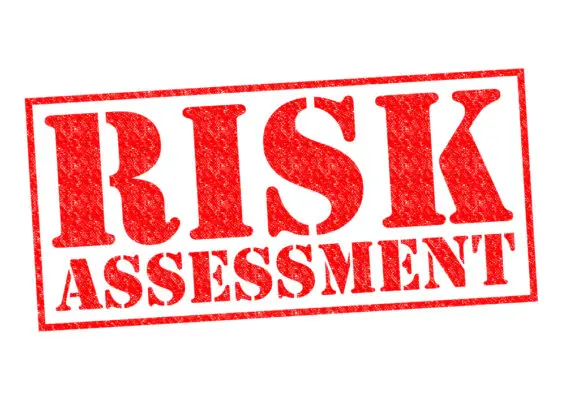The NFPA 99 Risk Assessment Tool ensures healthcare facilities’ safety and security. Developed by the National Fire Protection Association (NFPA), this tool systematically identifies potential risks and hazards within healthcare settings.
Understanding NFPA 99 Risk Categories is crucial for healthcare facility managers as it enables them to allocate resources efficiently and implement appropriate preventive measures. This article will explore the various risk assessment methods outlined in NFPA 99, highlighting their significance in maintaining a safe environment for patients, staff, and visitors.
Additionally, with the ongoing COVID-19 pandemic, healthcare facilities must align their practices with the updated guidelines provided by NFPA. This article will delve into how these guidelines address the unique challenges posed by COVID-19 and offer insights on implementing risk assessments amidst this global crisis.
For those seeking guidance on conducting an NFPA 99 Risk Assessment, this article will provide step-by-step instructions to evaluate potential hazards within healthcare facilities comprehensively.

NFPA 99 RISK ASSESSMENT CODE IN HEALTHCARE FACILITIES
The NFPA 99 risk assessment code is essential for evaluating safety measures in healthcare facilities. This code provides guidelines and procedures for conducting a comprehensive risk assessment to ensure the highest level of patient care and safety in healthcare.
The code outlines various categories of risk that must be assessed, such as electrical systems, gas and vacuum systems, medical gas systems, and fire protection systems. Each category is further divided into specific areas of concern, allowing for a thorough evaluation of potential risks.
The risk assessment procedure outlined in this code provides a systematic approach to identifying hazards, analyzing their impact on patient care, and implementing appropriate control measures. By following the guidelines outlined in this code, healthcare facilities can effectively mitigate risks and provide a safe environment for both patients and staff.
Understanding NFPA 99 Risk Categories
Understanding the risk categories outlined in NFPA 99 is crucial for evaluating potential hazards and ensuring safety in various healthcare settings.
The NFPA 99 risk assessment tool provides a risk-based approach to identify and prioritize potential risks within a healthcare facility. This tool categorizes risks into three main categories: major, minor, and injury to patients.
Major injuries could result in death or serious harm, while minor injuries are less severe but still pose a risk to individuals’ well-being. Injury to patients refers to harm caused directly by the healthcare environment or equipment.
By understanding these risk categories, healthcare professionals can implement appropriate measures to mitigate potential hazards and ensure patient safety.
For example, ambulatory health care centers may need to consider electrical safety a significant risk due to using medical equipment powered by electricity.
Additionally, awareness of these categories allows for better preparedness in healthcare facilities by prioritizing resources and implementing necessary preventive measures.
The “Health Care Facilities Code” is crucial in maintaining safe health care facilities. It provides guidelines on various subjects such as electricity in health care, routine maintenance, safe storage, and strict compliance with auditing businesses, including audits for hyperbaric facilities. For healthcare field practitioners, understanding this code ensures a safer environment for patients and the staff.
The code addresses various concerns, from high-frequency electricity to the choice of material for vacuum systems. One distinct hazard identified is fire-related problems, highlighting the importance of following the NFPA 101 Life Safety Code. In the same vein, the assessment in each chapter discusses how to mitigate each identified hazard to life.
The biggest modifications in the recent code revision, termed “revision Technical,” includes format revisions that streamline the code’s usability. One such change clarifies the gauge pressure requirements for medical air systems, making it easier for healthcare facility staff to abide by the standards.
Applicable facilities, including limited-care facilities, dental offices, and ambulatory care facilities, will benefit from enhanced clarity. Central supply sources like oxygen concentrators have been given special attention, ensuring their safe operation and proximity to patients.
The code also delves into issues like constructing healthcare spaces and implementing the lean manufacturing concept in healthcare organizations. The inclusion of this concept echoes the necessity for an organized workplace, providing simple tools for efficiency and effectiveness in patient care services.
Topics on emergency preparedness in health care have been extensively covered, with a particular focus on decentralized healthcare systems and paging processes. This section has been expanded to address audits for specific facilities, helping to create safer healthcare spaces for all.
Master alarms and wireless phone systems have been considered in facilities management in health care. These systems contribute significantly to preparedness in health care, helping to mitigate potential hazards and prevent avoidable death to patients.
Understanding the code’s complexity involves looking at the healthcare facility’s compliance from procedure to procedure, including pipe marking requirements and the handling of flammable materials. While the code encompasses categories through collaboration, it also illustrates how the overall standard for healthcare facilities can influence the healthcare delivered.
In essence, the Health Care Facilities Code is a specialized standard designed to guide the operation of health care locations across the care type facilities spectrum. Its revisions address the growing and changing needs of health care services, ultimately striving towards the specialized mission of ensuring safer facilities for all.
NFPA 99 Healthcare Facility Risk Assessment Methods
One crucial aspect of evaluating potential hazards and ensuring safety in healthcare settings involves implementing effective risk assessment methods for healthcare facilities. The NFPA 99, a widely recognized document that provides safety guidelines for healthcare operations, includes specific requirements for conducting risk assessments.
These assessments are essential to identify and mitigate risks that may threaten patients, staff, or the overall operation of the facility.
The NFPA 99 risk assessment tool outlines various methods that can be used to assess risks within healthcare facilities. These methods include but are not limited to hazard vulnerability analysis (HVA), failure mode and effects analysis (FMEA), and root cause analysis (RCA).
Each method focuses on different risk management aspects and helps identify potential hazards, analyze their impact on patient safety, and develop appropriate mitigation strategies.
Utilizing these risk assessment methods outlined in NFPA 99, healthcare facilities can ensure safety standards compliance while proactively managing potential risks. This systematic approach enables healthcare organizations to create a safer environment for patients, staff, and visitors.
NFPA Guidelines for Healthcare Facilities in Light of COVID-19
Amidst the unprecedented challenges posed by the global pandemic, healthcare facilities must adhere to updated guidelines set forth by regulatory organizations to safeguard the health and well-being of patients, staff, and visitors.
In response to COVID-19, the National Fire Protection Association (NFPA) has provided specific guidelines for healthcare facilities. These guidelines emphasize the importance of conducting thorough risk assessments using the NFPA 99 Risk Assessment Tool. The tool provides a structured approach for evaluating potential risks within healthcare facilities. It assists in identifying areas where additional safety measures may be necessary to mitigate these risks effectively.
The NFPA also emphasizes the need for a comprehensive risk assessment methodology that includes ongoing monitoring and evaluation of risks. Additionally, it highlights the significance of timely submittal of risk assessments to ensure continuous improvement in healthcare delivery and patient safety.
Following these safety guidelines for risk assessment and risk evaluation processes, healthcare facilities can enhance their overall safety standards during this challenging time.

How to carry out NFPA 99 Risk Assessment
To effectively evaluate potential risks within healthcare facilities, it is crucial to employ the structured approach provided by the NFPA guidelines, incorporating a comprehensive risk assessment methodology that includes ongoing monitoring and evaluation of identified areas.
The NFPA 99 Risk Assessment tool is designed to assist healthcare organizations in identifying and addressing potential risks related to building occupancy type and protection standards. It encompasses various aspects such as fire safety, electrical, and medical gas systems.
The tool incorporates the reconfiguration of occupancy chapters from previous NFPA Life Safety Code editions into a cohesive edition. The NFPA Committee on Hospitals and other technical committees have developed these risk-based documents based on extensive research and industry expertise.
Following this systematic approach outlined in the current edition of the NFPA 99 Risk Assessment tool, healthcare facilities can ensure compliance with safety standards while mitigating potential risks.
| Building Occupancy Type | Protection Standards | Reconfiguration of Chapter |
|---|---|---|
| Hospital | High | Yes |
| Clinic | Medium | Yes |
| Nursing Home | Low | No |
| Laboratory | High | Yes |
| Rehabilitation Center | Medium | Yes |
Table 1: Examples of Building Occupancy Types and their corresponding Protection Standards and Reconfiguration status according to NFPA 99 Risk Assessment Tool.
Frequently Asked Questions
What are the penalties for non-compliance with NFPA 99 risk assessment requirements in healthcare facilities?
Non-compliance with NFPA 99 risk assessment requirements in healthcare facilities may result in penalties. These penalties vary depending on the severity of the violation and can include fines, legal action, loss of accreditation or certification, and reputational damage.
Are there any specific guidelines or recommendations for conducting NFPA 99 risk assessment in long-term care facilities?
Specific guidelines and recommendations for conducting NFPA 99 risk assessments in long-term care facilities include identifying potential hazards, evaluating the likelihood of occurrence, assessing their impact on patient safety, and implementing appropriate control measures to mitigate risks.
Can a healthcare facility use its own risk assessment tool instead of the NFPA 99 risk assessment tool?
Healthcare facilities can use their own risk assessment tool instead of the NFPA 99 Risk Assessment Tool. These facilities can develop a tool that aligns with their specific needs and requirements for ensuring patient safety and compliance with relevant regulations.
Are any exemptions or waivers available for healthcare facilities that cannot meet certain NFPA 99 risk assessment requirements?
The literature does not mention exemptions or waivers for healthcare facilities unable to meet certain NFPA 99 risk assessment requirements. Further research is necessary to determine if any exemptions exist.
How often should a healthcare facility conduct NFPA 99 risk assessments to ensure ongoing compliance with the code?
Healthcare facilities should conduct NFPA 99 risk assessments regularly to ensure ongoing compliance with the code. The frequency of these assessments may vary depending on factors such as changes in facility design, equipment, or operations, but they should be conducted at least annually.

Conclusion
The NFPA 99 risk assessment tool is a crucial resource for healthcare facilities to ensure the safety and well-being of patients and staff.
Understanding the risk categories and following the guidelines provided by NFPA, healthcare facilities can effectively assess and mitigate potential risks.
This becomes even more important in light of the COVID-19 pandemic, where additional precautions must be taken.
A thorough NFPA 99 risk assessment is essential for healthcare facilities to maintain a safe environment for everyone involved.

Chris Ekai is a Risk Management expert with over 10 years of experience in the field. He has a Master’s(MSc) degree in Risk Management from University of Portsmouth and is a CPA and Finance professional. He currently works as a Content Manager at Risk Publishing, writing about Enterprise Risk Management, Business Continuity Management and Project Management.

